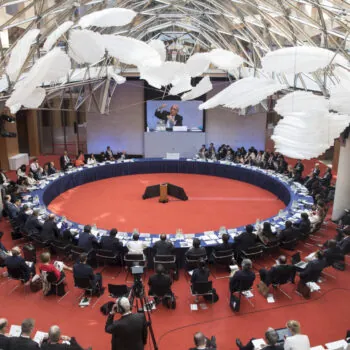On 3 December, in time for the COP in Lima, the German Government decided on a package of measures to ramp up its climate policy ambitions. The main goal is to realise the self-imposed GHG reduction target of 40% by 2020 – in other words, to close the current gap of about 6 to 8% that existing measures would produce. In terms of emissions, this equates to an additional 62 to 78 million tons of CO2 that will be saved.
A major breakthrough would have looked different. Many of the economy-wide measures, especially in the area of energy efficiency, still have to be translated into law – and we can anticipate that many industry players will be as obstructive as possible in the coming months. Moreover, rather than introducing regulation, the government opted for softer measures such as incentives, subsidies, and better information.
Good news for the buildings sector, though: Germany’s development bank KfW will add another annual €200 million to its retrofitting support scheme so the programme will reach €2 billion per year. It will finance cheap loans to improve the energy efficiency of buildings and offer €300 million per year in grants.
Additional tax breaks are supposed to add further incentives for retrofitting measures. A lot of this, however, is still subject to the successful negotiation of a deal to finance the emerging gap in tax revenue. At the moment, property owners stand to benefit whereas tenants might have to foot the bill. This is not sustainable: ambitious climate action must not come at a social price.
Nevertheless, the German Government’s Climate Action Plan is clearly a stage victory. In 2015, utilities will be required by law to reduce their emissions by an additional 22 million tons of CO2. Pretty much all of that will have to come from coal plants. So far it seems that the plan will leave it up to companies how they will achieve the emissions savings but the direction is clear. As reluctant as Sigmar Gabriel, the German Economics and Energy Minister, might be to acknowledge it: this is another nail in the coffin for coal. He is now facing the major and thankless task to prepare his stakeholders in industry and trade unions for a future phase-out of coal. This will be a painful path, and high carbon workers in particular need support during the transition process.
But it is also a path of opportunity. This became clear this week when the German utility E.ON decided to de-merge into two companies and dedicate a new spin-off entirely to the development of new markets in renewable energy and customer solutions. Vattenfall is intending to get rid of its remaining fossil assets in Germany. These steps prove that the transformation of the energy sector is happening. National governments are now challenged to further incentivise the transformation of the power sector. For Germany, this means to develop a socially and economically sustainable plan to phase-out coal.
Whether or not the German Climate Action Plan will actually close the 2020 emissions gap is hard to tell. The pressure on the German Government is not off. We need to make sure that measures in the power, buildings, and transport sectors, in industry, households and the public sector get implemented effectively and in time. More than anything else, however, we need to push for the big prize: the decarbonisation of the power sector in Germany that proves that the Energiewende is possible and rife with opportunity. Spread the news in Lima!


